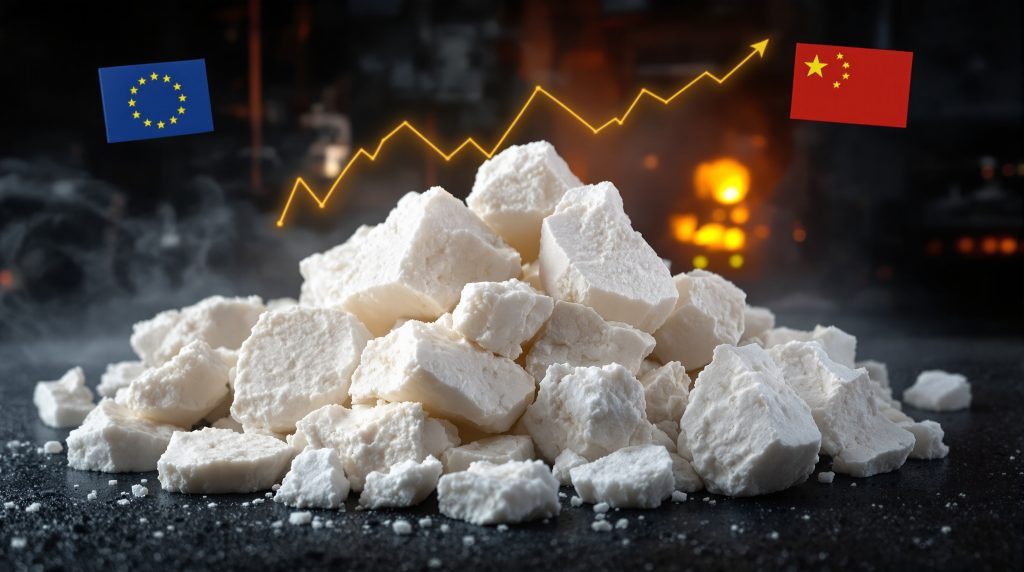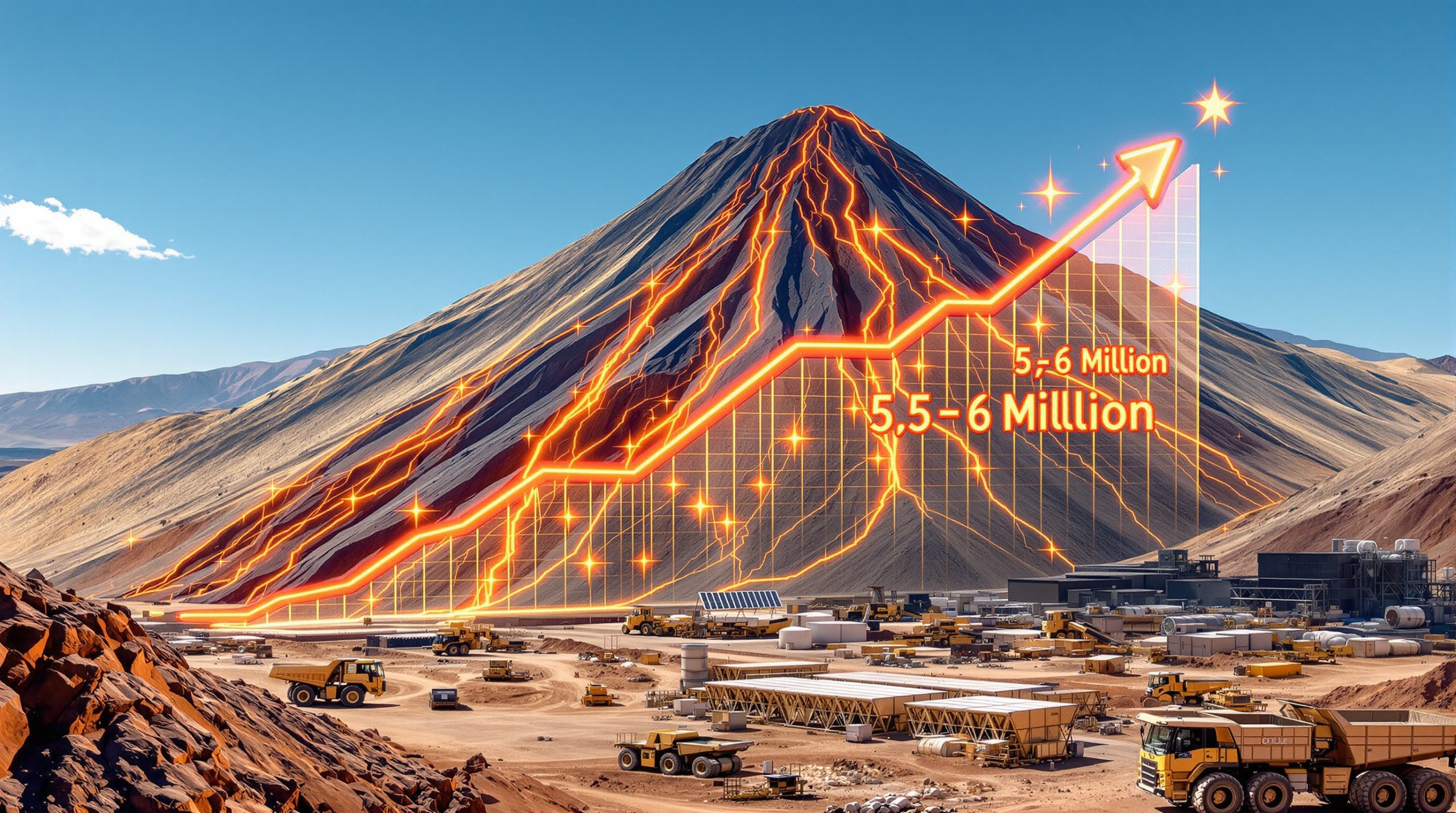Understanding Dead Burned Magnesia in European Markets: Pricing, Applications, and Supply Dynamics
What is Dead Burned Magnesia and Why is it Important?
Dead burned magnesia (DBM) represents a specialized form of magnesium oxide that undergoes calcination at extremely high temperatures ranging between 1500-2000°C. This intensive thermal processing creates a material with exceptional properties that make it invaluable across multiple industries. The resulting product exhibits remarkable density, chemical stability, and strong resistance to hydration—qualities that set it apart from other magnesium compounds.
The industrial significance of DBM cannot be overstated, particularly in European manufacturing sectors where it serves as a cornerstone material for critical production processes. Available in various purity grades, the 90% and 97% MgO content variants stand as the most commercially significant for European importers, each serving specific industrial applications based on their performance characteristics.
Definition and Basic Properties
Dead burned magnesia's distinctive properties emerge from its high-temperature processing, which fundamentally alters its crystalline structure. The intense heat removes volatile components and carbon dioxide, resulting in a dense, chemically stable material that resists moisture absorption even under challenging industrial conditions. This stability makes DBM particularly valuable in environments where standard materials would quickly degrade.
The material's exceptional resistance to thermal shock—the ability to withstand rapid temperature changes without cracking—further enhances its industrial utility. This characteristic stems from DBM's unique crystalline structure, established during the high-temperature production process, which provides dimensional stability even when subjected to extreme heat cycling.
Critical Applications Across Industries
The primary industrial application for dead burned magnesia lies in the production of high-temperature refractory materials essential for industrial furnaces. These specialized materials form protective linings that shield equipment from extreme thermal conditions while maintaining structural integrity. According to Fastmarkets' pricing notice from September 2025, DBM serves as a critical component in refractories used specifically for "making steel, glass, and cement"—three foundational manufacturing sectors in Europe.
In steel production facilities, DBM-based refractories prove essential for lining converters and ladles that contain molten metal at temperatures exceeding 1600°C. The material's ability to withstand both thermal stress and chemical attack from slag makes it irreplaceable in modern steelmaking.
Glass manufacturing processes similarly depend on DBM-based refractories to contain molten glass and maintain production efficiency. The material's resistance to chemical attack from glass melts, combined with its thermal stability, extends equipment lifespan and improves energy efficiency.
Cement kilns represent another critical application area, where extreme temperatures and abrasive conditions demand materials capable of withstanding harsh operating environments. DBM-based linings protect kiln structures while maintaining dimensional stability throughout heating and cooling cycles.
Beyond these traditional applications, dead burned magnesia has found growing importance in specialized agricultural applications and environmental remediation projects. Its alkaline properties make it valuable for soil pH adjustment and as a component in water treatment systems for neutralizing acidic contaminants.
How is Dead Burned Magnesia Priced in European Markets?
The pricing landscape for dead burned magnesia in European markets has evolved significantly with increased market transparency through dedicated price assessments. Understanding the pricing mechanisms helps buyers and suppliers navigate this specialized market more effectively.
Current Pricing Structure and Transparency
Enhancing market transparency, Fastmarkets launched dedicated price assessments for dead burned magnesia in European markets in September 2025. These assessments, published on the third Tuesday of each month at 4pm London time, cover both 90% and 97% MgO grades—the two most commercially significant variants. This development represents a significant step toward greater market visibility in what has historically been a somewhat opaque pricing environment.
The assessments use a CIF (Cost, Insurance, Freight) Europe basis denominated in US dollars per tonne, providing a comprehensive landed cost benchmark that incorporates shipping expenses. This pricing approach offers European buyers a more complete picture of total acquisition costs rather than simply ex-works pricing from producing regions.
Standard assessments apply a minimum quantity threshold of 1,000 tonnes, reflecting the industrial-scale nature of this market. This threshold ensures that pricing reflects commercial reality for major industrial buyers rather than premium prices associated with smaller volume purchases.
Payment terms typically follow a structure requiring settlement within 30 days of delivery, as specified in the Fastmarkets pricing methodology. This standardized approach to payment terms helps normalize pricing comparisons across different suppliers and regions.
Key Price Determinants for European Imports
Shipping costs have emerged as an increasingly volatile component of DBM pricing, with ocean freight rates experiencing significant fluctuations in recent years. These transportation expenses can represent a substantial percentage of the final CIF price, particularly for lower-grade material where the base product value is proportionally less dominant in the total landed cost.
Energy costs at production facilities directly influence base pricing, as DBM production requires substantial thermal energy for the high-temperature calcination process. Energy price volatility in major producing countries therefore transmits directly to product pricing.
The supply-demand balance shifts continually with European industrial production levels, particularly in steel, cement, and glass manufacturing. Periods of high industrial activity create upward pressure on DBM pricing as refractory demand increases.
Currency fluctuations between the Euro, US dollar, and the currencies of producing countries add another layer of pricing complexity. As most international DBM trade occurs in US dollars, exchange rate movements can significantly impact effective prices for European buyers operating in Euros.
Environmental regulations in both producing and importing regions increasingly influence pricing through compliance costs. Carbon pricing mechanisms, emissions standards, and sustainability transformation add production costs that ultimately reflect in market pricing.
Where Does Europe Source its Dead Burned Magnesia?
Europe's dead burned magnesia supply chain spans multiple continents, balancing domestic production against imports from various global sources. This diversification strategy helps ensure supply security for this critical industrial material.
Major Global Suppliers to European Markets
China maintains its position as the dominant global producer and key supplier to European markets, leveraging vast magnesite reserves and well-established processing capacity. Chinese suppliers offer competitive pricing, particularly for standard-grade material, though shipping distances and associated costs somewhat offset this advantage.
Greek producers present strategic regional supply advantages with significantly shorter shipping routes to major European industrial centers. The proximity translates to reduced freight costs and shorter lead times, enhancing supply chain reliability for time-sensitive applications.
Turkish manufacturers have established themselves as increasingly important alternative suppliers, offering competitive options that help diversify Europe's supply base. The country's expanding production capacity and geological resources position it well for continued growth in European market share.
Limited volumes from sources including Russia, Brazil, and North Korea supplement European supplies, though logistical complexities and, in some cases, trade restrictions complicate these supply channels. These secondary sources nevertheless contribute to overall market diversity and supply security.
As confirmed in Fastmarkets' September 2025 pricing notice, the key producer countries supplying Europe include "China, Greece, and Turkey," reflecting the established supply pattern for this critical industrial material.
European Domestic Production Landscape
European domestic production covers only a portion of regional demand, creating inherent import dependency for this strategically important material. The deficit between consumption and production drives the need for reliable international supply chains.
European producers like RHI Magnesita maintain significant but insufficient production capacity relative to total regional demand. These domestic sources prioritize higher-value, specialized grades where technical performance and reliability command premium pricing.
Strategic investments in European production capacity aim to reduce import dependency, particularly for grades deemed critical to strategic industries. These investments often focus on upgrading existing facilities to improve efficiency and output quality rather than establishing entirely new production sites.
Quality differences between European-produced and imported DBM affect market segmentation, with domestic production generally targeting higher-purity, premium applications where performance characteristics justify higher production costs. This strategy allows European producers to maintain viability despite generally higher operating costs.
Specialized producers such as Nedmag in the Netherlands focus on ultra-high purity grades for premium applications where technical performance requirements justify premium pricing. These niche producers serve specific industrial segments rather than competing directly with high-volume imports.
What Are the Quality Specifications for Dead Burned Magnesia?
The performance characteristics and application suitability of dead burned magnesia depend heavily on its specific quality parameters. Understanding these specifications helps buyers select appropriate materials for their intended applications.
Standard Grade Specifications
The 90% MgO grade represents the standard industrial quality for general refractory applications where moderate performance characteristics suffice. This widely-used grade balances performance requirements with cost considerations, making it suitable for many standard industrial applications.
The 97% MgO grade serves as premium quality material for specialized high-temperature applications demanding enhanced performance. The higher purity level translates to superior refractory properties, including better high-temperature stability and reduced risk of chemical interactions with process materials.
As confirmed in Fastmarkets' pricing specifications, both grades are typically supplied as lump material in bulk shipments, facilitating efficient handling and processing by industrial users. This physical form allows for appropriate crushing and sizing during refractory manufacturing.
Impurity profiles—particularly levels of CaO, SiO2, and Fe2O3—play a critical role in determining application suitability. These compounds can significantly affect high-temperature performance characteristics, making their precise control essential for specialized applications.
Bulk density and grain size distribution significantly impact performance in refractory applications, affecting properties such as thermal conductivity, mechanical strength, and resistance to penetration by molten materials. These physical parameters must match application requirements for optimal performance.
Testing and Certification Requirements
Chemical composition analysis represents a fundamental quality verification step, confirming MgO content and impurity levels against specifications. Standard testing methodologies ensure consistent evaluation across different suppliers and production lots.
Physical property testing encompasses bulk density measurements and grain size distribution analysis to verify material consistency. These parameters directly influence processing behavior during refractory manufacturing and subsequent performance in service.
Performance testing for specific applications, including thermal shock resistance evaluation, helps validate material suitability for demanding industrial environments. These application-specific tests go beyond basic composition analysis to assess actual performance under simulated service conditions.
Compliance with European regulatory standards for industrial minerals ensures legal conformity and facilitates cross-border movement within the European Union. These standards include both composition requirements and health and safety parameters.
Documentation requirements for cross-border shipments within Europe include material safety data sheets, certificates of analysis, and appropriate customs documentation. Complete and accurate documentation facilitates smooth logistics and regulatory compliance.
How Has the Market for Dead Burned Magnesia Evolved?
The dead burned magnesia market has undergone significant evolution in recent years, responding to changing industrial demand patterns, supply chain disruptions, and increasing recognition of its strategic importance.
Recent Market Trends and Developments
European stockpiles helped stabilize prices early in the year but have since diminished, reducing their buffer effect against supply disruptions. This inventory drawdown reflects both supply chain optimization efforts and responses to market uncertainty.
Supply chain disruptions have created periodic availability challenges, highlighting the importance of diversified sourcing strategies. These disruptions have affected both production capacity in source countries and logistics networks connecting suppliers to European buyers.
The market has seen increasing focus on securing reliable supply chains for this critical industrial material, with many buyers developing multi-sourcing strategies and longer-term supply agreements. This trend reflects growing recognition of DBM's essential role in maintaining industrial production capacity.
Growing recognition of dead burned magnesia as a strategically important material for European industry has elevated its profile in industrial policy discussions. This heightened awareness has prompted both private sector investment and policy consideration regarding supply security.
The launch of dedicated price assessments by Fastmarkets in September 2025 for both 90% and 97% MgO grades reflects the material's market significance and the need for greater price transparency. As noted in their pricing notice, these assessments were established "to provide better transparency in European refractory materials."
Future Outlook for European DBM Markets
Expected growth in demand from green cement and steel manufacturing sectors signals positive market development as these industries implement more sustainable production technologies. Many of these advanced processes require high-performance refractories where DBM plays an essential role.
Potential for increased European production to reduce import dependency represents a strategic direction that could reshape market dynamics over the medium term. Investment decisions in this area will balance economic considerations against strategic supply security objectives.
Technological developments may affect quality requirements and applications as industrial processes evolve toward greater efficiency and sustainability. These changes could shift demand patterns across different DBM grades and specifications.
Shipping cost volatility will likely continue influencing CIF pricing, adding a layer of uncertainty to landed cost projections. This factor reinforces the advantage of geographically proximate suppliers like those in Greece and Turkey compared to more distant sources.
Market volatility hedging considerations are becoming more prominent in sourcing decisions as industrial users increasingly evaluate environmental footprints across their supply chains. This trend may favor producers with lower carbon production methods and transparent environmental reporting.
What Role Does Dead Burned Magnesia Play in Modern Manufacturing?
Dead burned magnesia serves as a foundational material enabling critical manufacturing processes across multiple industrial sectors. Its unique properties make it irreplaceable in applications where extreme conditions would quickly destroy conventional materials.
Critical Applications in Steel Production
DBM-based refractories prove essential for lining basic oxygen furnaces and electric arc furnaces where temperatures regularly exceed 1600°C. These linings protect the steel vessel structure while withstanding both thermal stress and chemical attack from aggressive slag compositions.
The material plays a crucial role in protecting ladles used for molten steel transportation, where maintaining temperature during transfer operations is critical to product quality. DBM-based linings resist both thermal cycling and chemical interaction with molten metal and slag.
Specialized slag modifiers for steel refinement often incorporate DBM to achieve specific metallurgical outcomes. These applications leverage the material's chemical properties to influence slag chemistry and improve steel quality.
By enabling longer equipment lifespans and reduced maintenance cycles, DBM-based refractories contribute significantly to production efficiency and cost control in steelmaking operations. The extended service life of high-quality linings reduces both direct replacement costs and production downtime.
Higher operating temperatures for specialty steel production become possible through advanced DBM-based refractory systems. These specialized materials support the extreme conditions necessary for producing high-performance alloys with demanding metallurgical requirements.
Importance in Cement and Glass Industries
Kiln linings for cement production represent another critical application area, where DBM-based refractories must withstand not only extreme temperatures but also mechanical abrasion from the rotating kiln and chemical attack from process materials. The material's combination of thermal stability and resistance to chemical degradation makes it ideal for this demanding environment.
Specialized refractory applications in glass melting furnaces rely on DBM's resistance to dissolution by molten glass. This property allows furnace linings to maintain integrity throughout extended production campaigns, enhancing operational efficiency and product quality.
Energy efficiency improvements through better thermal management represent an increasingly important benefit of advanced DBM-based refractory systems. Better-performing linings reduce heat loss and improve temperature distribution, reducing energy consumption per unit of production.
Extended equipment operational lifespans directly translate to reduced capital expenditure requirements and improved return on investment for industrial facilities. High-performance DBM refractories can significantly extend the period between major rebuilds of industrial furnaces.
Higher production temperatures for specialized products become achievable through advanced refractory systems incorporating premium-grade DBM. These capabilities enable manufacturers to develop innovative products with enhanced performance characteristics.
How Do Shipping and Logistics Affect DBM Pricing?
Transportation factors significantly influence the final delivered cost of dead burned magnesia in European markets. Understanding these dynamics helps buyers develop more effective sourcing strategies and cost forecasting.
Transportation Challenges and Costs
Bulk shipping rates have shown significant volatility in recent years, directly impacting CIF prices for imported DBM. As specified in Fastmarkets' pricing methodology, their assessments incorporate the complete landed cost including shipping, making this a critical component of market pricing.
Container availability issues periodically affect delivery schedules, creating uncertainty in supply planning. These logistical constraints can temporarily distort market pricing by creating localized supply shortages even when production capacity remains sufficient.
Port congestion in both origin and destination ports influences total delivery costs through demurrage charges and extended transit times. These factors add indirect costs that ultimately reflect in market pricing.
Insurance costs fluctuate based on shipping routes and geopolitical factors, adding another variable element to the total landed cost. Routes through high-risk areas command premium insurance rates that contribute to overall import expenses.
Documentation and customs procedures add complexity to international shipments, requiring specialized expertise to navigate efficiently. These administrative requirements contribute to the total cost of importing DBM into European markets.
Supply Chain Risk Management
Inventory management strategies to buffer against supply disruptions have become increasingly important as global mining landscape challenges face mounting challenges. Many European industrial users maintain strategic stockpiles of critical grades to insulate production from short-term supply interruptions.
Diversification of supplier sources helps mitigate regional production risks, preventing overreliance on any single geographic source. This approach balances cost considerations against supply security objectives.
Long-term contracts versus spot purchasing strategies represent different approaches to managing price volatility risk. Contract structures increasingly incorporate flexibility mechanisms to accommodate market fluctuations while providing baseline supply security.
Forward freight agreements provide one mechanism to manage shipping cost volatility, allowing importers to lock in transportation costs independent of physical supply contracts. These financial instruments help stabilize the landed cost component of DBM imports.
Strategic stockpiling during favorable market conditions represents a tactical approach to cost management, allowing buyers to accumulate inventory when pricing and availability are advantageous. This approach requires accurate market timing and sufficient storage capacity.
What Are the Environmental Considerations for DBM Production and Use?
Environmental factors increasingly influence both the production economics and market positioning of dead burned magnesia. Sustainability considerations affect both regulatory compliance requirements and customer preferences.
Sustainability Challenges and Opportunities
High energy consumption in production creates a significant carbon footprint, particularly when fossil fuels provide the thermal energy for calcination. This environmental impact attracts increasing scrutiny as industries face pressure to reduce carbon emissions.
Mining impacts at source locations raise environmental concerns regarding habitat disruption, water quality, and land reclamation. Responsible producers increasingly implement comprehensive environmental management systems to address these issues.
Carbon capture technologies in production processes represent an emerging opportunity to reduce environmental impact while maintaining production capacity. These technologies aim to capture CO2 emissions from calcination for either sequestration or beneficial use.
More energy-efficient industrial processes enabled by high-performance DBM-based refractories contribute to sustainability through reduced energy consumption per unit of production. This indirect environmental benefit offsets some of the material's production footprint.
Longer equipment lifespans achieved through high-performance refractories reduce the frequency of major rebuilds and associated material consumption. This lifecycle benefit contributes to overall resource efficiency and waste reduction.
Regulatory Landscape Affecting Trade
Tariff impact insights potentially affecting import pricing represent an emerging factor in international trade of carbon-intensive materials like DBM. These mechanisms aim to level the competitive playing field between producers subject to carbon pricing and those without equivalent constraints.
Environmental compliance requirements for European industrial users increasingly extend to their supply chains, creating pressure for transparency regarding production practices and environmental impacts. These expectations translate to enhanced reporting and certification requirements.
Sustainability certification is becoming increasingly important for suppliers seeking to maintain market access as buyers implement responsible sourcing policies. These certification programs verify environmental management practices against established standards.
Emissions reporting requirements throughout the supply chain create additional administrative burdens but also provide opportunities for differentiation through superior environmental performance. Complete and accurate emissions data enables informed decision-making regarding environmental impact.
Recycling and circular economy initiatives affecting market dynamics represent an emerging trend that may create new market opportunities for reclaimed material from end-of-life refractory products. These initiatives aim to reduce primary resource consumption through material recovery and reuse.
FAQ: Dead Burned Magnesia in European Markets
What distinguishes 90% from 97% MgO dead burned magnesia?
The primary difference lies in purity levels and resulting performance characteristics. The 97% MgO grade offers superior performance in extreme high-temperature applications where chemical stability is critical, exhibiting better resistance to slag penetration and longer service life under challenging conditions. This higher purity translates directly to improved performance in the most demanding refractory applications.
The 90% grade serves standard refractory applications where moderate performance suffices, balancing cost considerations with technical requirements. This grade contains higher levels of impurities like calcium oxide, silica, and iron oxide, which affect its high-temperature properties but make it more economical for less demanding applications.
How has the European DBM market changed in recent years?
The European market has experienced increased price volatility due to shipping cost fluctuations, growing recognition of DBM as a strategically important material, and efforts to diversify supply sources beyond traditional Chinese imports. Supply chain disruptions have highlighted vulnerability to logistical constraints, prompting many buyers to develop more robust sourcing strategies.
Price transparency has improved with Fastmarkets' launch of regular assessments for both 90% and 97% MgO grades on a CIF Europe basis. These assessments, published monthly, provide valuable benchmarks for contract negotiations and market analysis in a sector where pricing information was previously limited.
Why is dead burned magnesia considered a critical material for European industry?
DBM serves as an essential component for manufacturing high-temperature refractories that enable steel, cement, and glass production—cornerstone industries of the European manufacturing sector. Without reliable access to this material, these fundamental industrial processes would be compromised, threatening broader manufacturing capabilities.
Limited domestic production capacity makes Europe dependent on imports for this strategically important material, creating potential vulnerability to supply disruptions. This dependency has elevated DBM's profile in discussions regarding industrial policy and strategic material security.
How do shipping costs impact the final price of DBM in Europe?
Shipping costs can represent a significant percentage of the total CIF price, especially for lower-grade material where the base product value is proportionally smaller. Recent volatility in global shipping rates has directly affected landed costs, sometimes accounting for 15-30% of the total CIF price depending on origin and market conditions.
The CIF pricing basis used in market assessments incorporates these shipping costs, making them an integral component of market pricing. This approach provides a more complete picture of actual acquisition costs for European buyers compared to ex-works pricing at origin.
What factors should buyers consider when sourcing DBM for European operations?
Buyers should evaluate total landed cost (including shipping), supplier reliability, quality consistency, lead times, payment terms, and potential supply chain disruptions. These factors together determine the true value proposition beyond simple price comparison.
Increasingly, environmental footprint and sustainability certifications are becoming important considerations as companies implement responsible sourcing policies. Documentation of environmental management practices and carbon footprint data can influence supplier selection decisions beyond traditional cost and quality parameters.
Strategic Importance of Dead Burned Magnesia for European Industry
Dead burned magnesia remains a critical industrial material for European manufacturing sectors, particularly in steel, cement, and glass production. The launch of dedicated price assessments for 90% and 97% MgO grades on a CIF Europe basis represents an important step toward market transparency in this essential commodity.
As European industries continue to evolve toward more sustainable practices, the role of high-quality refractories in enabling energy efficiency and extended equipment lifespans underscores the strategic importance of securing reliable DBM supply chains. The balance between import dependency and domestic production capacity will likely remain a key consideration for European industrial policy in this sector.
With pricing published monthly and minimum quantities of 1,000 tonnes, these assessments provide valuable benchmarks for contract negotiations and market analysis in a sector where transparency has historically been limited. As industries adapt to changing environmental regulations and industry evolution trends, the DBM market will continue to evolve in response to these broader industrial trends.
Further Exploration:
Readers interested in learning more about industrial minerals pricing and methodology can explore related educational content at Fastmarkets' methodology section, which offers additional perspectives on price assessment approaches for industrial minerals and other commodities.
Looking to Invest in the Next Major Mineral Discovery?
Discovery Alert's proprietary Discovery IQ model delivers real-time notifications of significant ASX mineral discoveries, transforming complex data into actionable investment insights. Visit Discovery Alert's dedicated discoveries page to understand how historic mineral discoveries have generated substantial returns, and position yourself ahead of the market.




